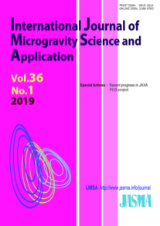Volume 36, Issue 1
Recent progress in JAXA PCG project
Displaying 1-8 of 8 articles from this issue
- |<
- <
- 1
- >
- >|
-
2019Volume 36Issue 1 Pages 360101-
Published: 2019
Released on J-STAGE: July 08, 2019
Download PDF (736K) -
2019Volume 36Issue 1 Pages 360102-
Published: 2019
Released on J-STAGE: December 06, 2019
Download PDF (739K) -
2019Volume 36Issue 1 Pages 360103-
Published: 2019
Released on J-STAGE: December 06, 2019
Download PDF (1041K) -
2019Volume 36Issue 1 Pages 360104-
Published: 2019
Released on J-STAGE: May 14, 2020
Download PDF (954K) -
2019Volume 36Issue 1 Pages 360105-
Published: January 31, 2019
Released on J-STAGE: May 14, 2020
Download PDF (1170K) -
2019Volume 36Issue 1 Pages 360106-
Published: January 31, 2019
Released on J-STAGE: May 14, 2020
Download PDF (1450K) -
2019Volume 36Issue 1 Pages 360107-
Published: January 31, 2019
Released on J-STAGE: May 14, 2020
Download PDF (1251K) -
2019Volume 36Issue 1 Pages 360108-
Published: January 31, 2019
Released on J-STAGE: May 14, 2020
Download PDF (1097K)
- |<
- <
- 1
- >
- >|
